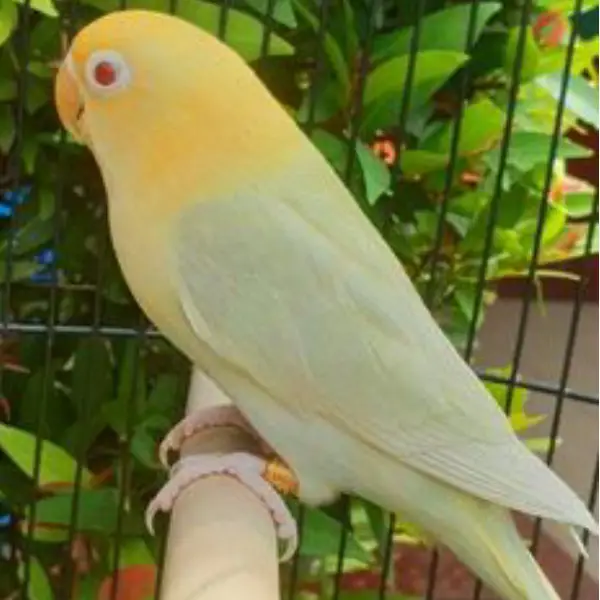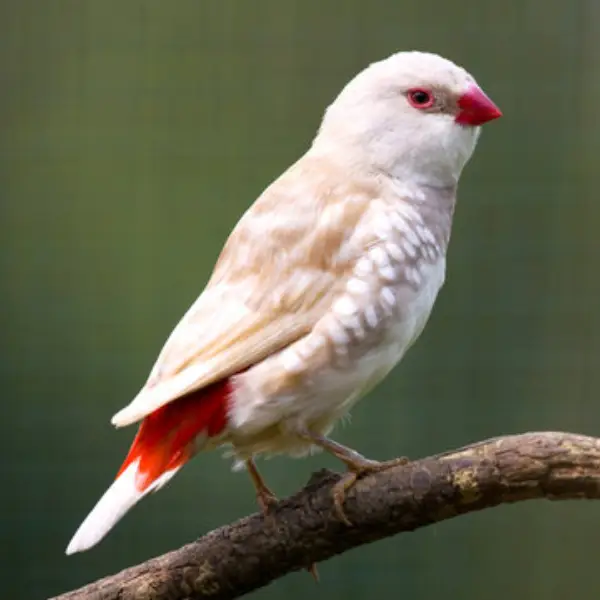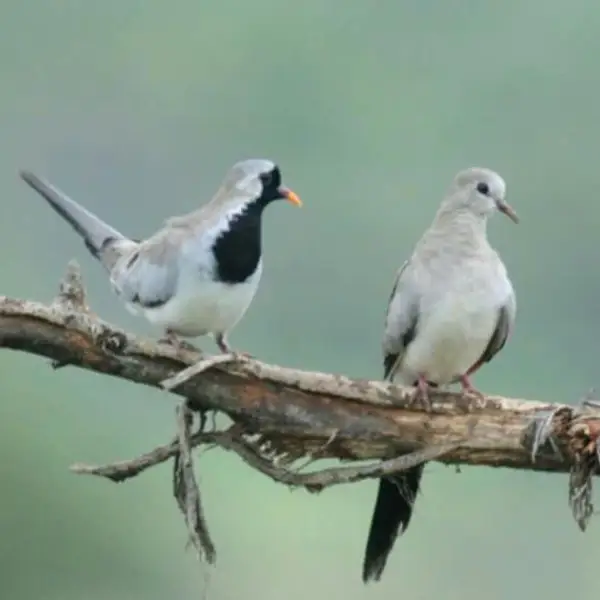Free shipping order over 20,000
Parblue Opaline Pale Fallow
₨ 80,000 Original price was: ₨ 80,000.₨ 50,000Current price is: ₨ 50,000.
- Scientific Name: Agapornis spp. (commonly seen in species like the Peach-faced Lovebird or Fischer’s Lovebird)
- Size: Typically around 13-15 cm (5-6 inches) in length.
- Color:
- Parblue (Partial Blue) Mutation: The Parblue mutation reduces green pigmentation, resulting in a soft bluish-green or turquoise hue on the bird’s body. This creates a gentle, pastel coloration that is both subtle and striking.
- Opaline Mutation: The Opaline trait enhances the coloration on the bird’s head, face, and back. In Parblue Opaline birds, the face may appear in soft shades of blue, turquoise, or pale yellow, smoothly blending into the body color.
- Pale Fallow Mutation: The Pale Fallow mutation lightens the overall coloration and typically results in red or pinkish eyes, giving the bird a delicate and almost ethereal appearance. The green or blue tones become even softer, and the feathers may have a slight creamy or beige tint.
- Combination Effect: The combination of these three mutations results in a bird with a unique palette of soft blues, greens, and creamy yellows, with a more uniform color distribution and striking red or pinkish eyes.
- Beak: Usually a light orange or pinkish color, blending well with the bird’s pastel hues.
- Eyes: Red or pinkish, due to the Pale Fallow mutation, providing a beautiful contrast against the bird’s soft feather colors.
- Legs and Feet: Typically pale or flesh-colored, complementing the bird’s overall light and delicate appearance.
Share
Share on facebook
Share on email
Important Keys:
Habitat
- Distribution: The Parblue Opaline Pale Fallow Lovebird is a mutation bred in captivity and is not found in the wild. This combination of mutations is highly prized among breeders and aviculturists for its rare and beautiful appearance.
- Environment: These lovebirds thrive in aviaries or spacious cages that allow for plenty of flying and social interaction. They are well-suited to indoor environments with proper care and attention.
Diet
- Primary Food: Seeds, including millet, canary seed, and other small seeds, form the core of their diet. A balanced pellet mix is also recommended to ensure overall health.
- Supplementary Food: Fresh fruits, vegetables, and occasional protein sources like egg food or mealworms are essential for maintaining vibrant plumage and general health.
- Feeding Behavior: These birds are active foragers and should be provided with a variety of seeds, pellets, and fresh foods to ensure a balanced and nutritious diet.
Breeding
- Breeding Season: In captivity, Parblue Opaline Pale Fallow Lovebirds can breed year-round if conditions are favorable.
- Nest Location: They build nests in enclosed spaces, such as nest boxes or dense vegetation. In captivity, wooden or artificial nest boxes are commonly used.
- Egg Quantity: Clutches usually consist of 4-6 eggs.
- Incubation Period: Eggs are incubated for about 21-23 days, with both parents typically involved in the process.
- Fledging: Chicks generally fledge around 6-8 weeks after hatching.
Lifespan
- In the Wild: Lovebirds typically live around 10-15 years.
- In Captivity: With proper care, they can live up to 15-20 years or more.
Behavior
- Social Structure: Parblue Opaline Pale Fallow Lovebirds are highly social and thrive in pairs or small groups. They are affectionate, playful, and enjoy interacting with their owners and other birds.
- Vocalization: They produce a variety of vocalizations, including chirps, whistles, and soft calls, used for communication and social bonding.
![]()
Be the first to review “Parblue Opaline Pale Fallow” Cancel reply
Related Products
-
-13%
Blue Star Finch
₨ 23,000Original price was: ₨ 23,000.₨ 20,000Current price is: ₨ 20,000. -
-11%
Albino Shaft Tail
₨ 22,500Original price was: ₨ 22,500.₨ 20,000Current price is: ₨ 20,000. -
-20%
Lotino Gouldian Finch
₨ 15,000Original price was: ₨ 15,000.₨ 12,000Current price is: ₨ 12,000. -
-20%
Silver Diamond Firetail Finch
₨ 31,250Original price was: ₨ 31,250.₨ 25,000Current price is: ₨ 25,000. -
-8%
Albino Cut-throat Finch
₨ 65,000Original price was: ₨ 65,000.₨ 60,000Current price is: ₨ 60,000. -
-20%
Zebra Dove
₨ 18,750Original price was: ₨ 18,750.₨ 15,000Current price is: ₨ 15,000. -
-20%
White-tailed Dove
₨ 1,250Original price was: ₨ 1,250.₨ 1,000Current price is: ₨ 1,000. -
-20%
Cape Dove
₨ 37,500Original price was: ₨ 37,500.₨ 30,000Current price is: ₨ 30,000.
Sign Up for Exclusive Birds Care Tips and Offers from Phool Panchi
Company links
Category
Contact
© 2024 Phool Panchi | Developed By v3Studio














Reviews
There are no reviews yet.